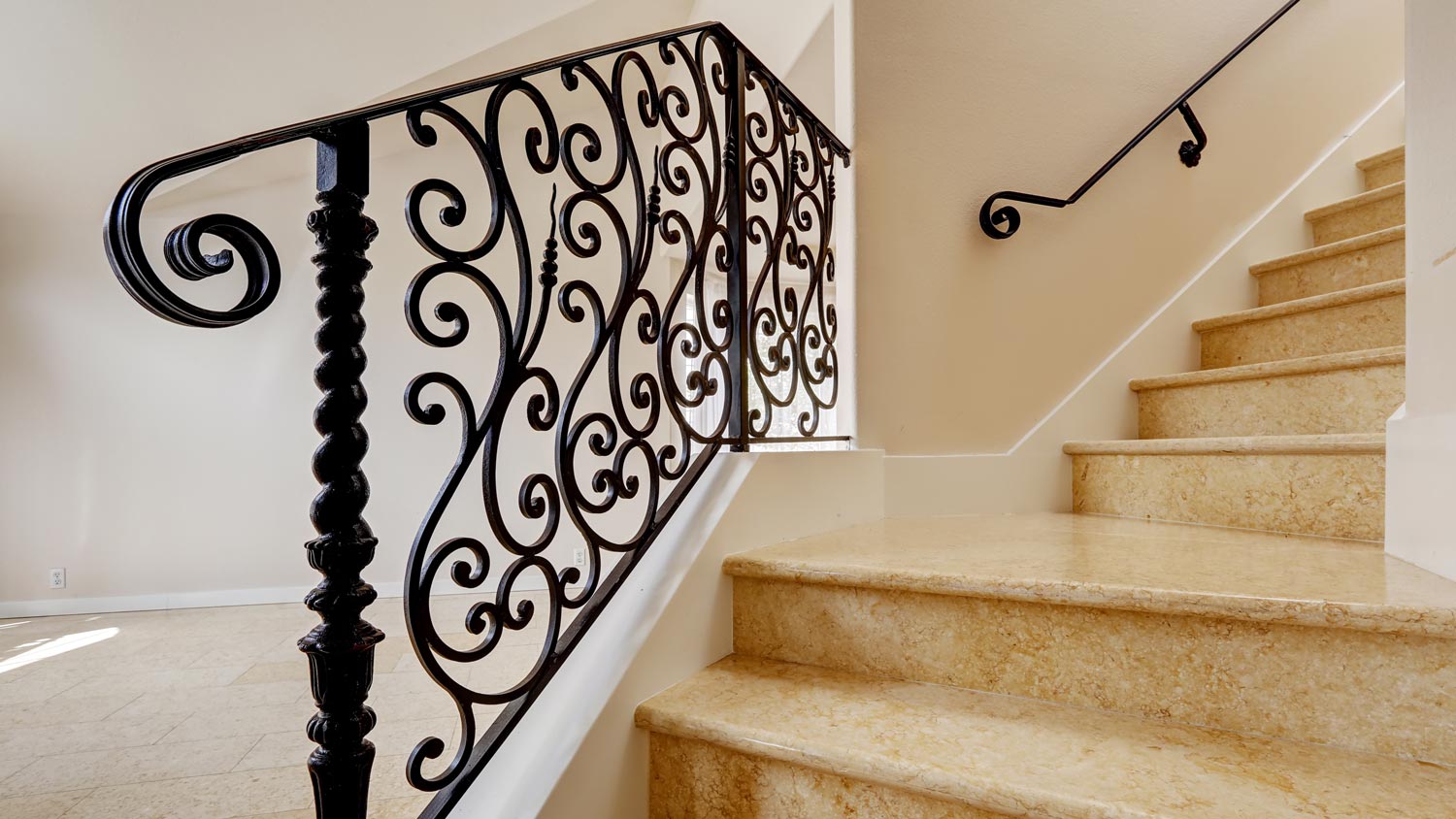
Get expert insights on wrought iron railing repair cost, including average prices, key cost factors, and tips to save on your next project.
Find the fence that fits


Whether you plan on tackling the project yourself or hiring a pro, installing a fence is a big decision. Your fence will set the tone for outdoor playdates, pool parties, and any other gatherings you like to host in your yard. There are many different types of fences that can serve a wide variety of purposes, so take some time to weigh the pros and cons of different yard fencing options.
When taking on this project, expect questions only a pro can answer. With our network of local pros, you'll get the job done and your questions answered—without the hassle and stress of doing it yourself.

Wood is one of the most common types of fences for yards because it can serve multiple purposes while appealing to many tastes. Typically, builders use cedar and pine for wood fences, but you can also use fir, redwood, and spruce.
Compared to other materials, wood is one of the more affordable options. Keep in mind, however, that wood is sensitive to the elements and weather fluctuations. It's prone to fading and requires regular maintenance every few years, so account for the cost of staining the fence and upkeep when budgeting.
| Pros | Cons |
|---|---|
| Affordable | Prone to rot |
| Easy to paint or stain | Requires maintenance |
| Can provide privacy | Can attract pests |
| Can block sound | May need repairs |
Best for: Budget-conscious folks looking for maximum privacy

Composite is a blend of wood and plastic polymers that builders use for both fencing and decking. Because manufacturers can make composite from recycled materials, this type of fencing is an environmentally friendly option.
Composite fencing comes in various styles and colors, and you can install horizontal versus vertical fencing for a modern aesthetic. Of all the other fence options listed here, composite is on the more expensive side and requires professional installation, so keep this in mind when budgeting.
| Pros | Cons |
|---|---|
| Environmentally friendly | Can't be painted |
| Low maintenance | Factory color can fade |
| Long-lasting | Higher price tag |
| Various colors available | Prone to mold |
Best for: Environmentally conscious homeowners looking for a stylish option

Vinyl fencing is a versatile option that comes in a variety of styles and colors. Use a solid, tall vinyl fence to add privacy and security to your yard. Or, use a white picket-style fence to increase your curb appeal and enclose your property.
While this option has a higher up-front cost, over time, it requires less maintenance, making this a cost-effective choice over its life. Keep in mind that the cost to install vinyl is higher because it requires precision, as imperfections in height are more evident.
| Pros | Cons |
|---|---|
| Affordable | Higher installation cost |
| Low maintenance | Can weaken over time |
| Wide range of styles | Not heat resistant |
| Wind resistant | Environmental concerns |
Best for: Homeowners looking for a durable, easy-care and budget-friendly fence

Aluminum fences are low maintenance, strong, and easy to install, making them a good choice for a wide range of fence installation projects. Because aluminum is lightweight and malleable, installers can build it on either a flat or sloped yard. It’s also both fade- and moisture-resistant. Moreover, powder-coated aluminum fences provide protection from rust and prevent the paint from peeling and chipping.
Most often, aluminum fencing comes standard with spacing between the poles, making this a less ideal option if you’re seeking more privacy and security. However, if you’re looking for a visually appealing way to section off your property, this is a great choice for an ambitious DIY project.
| Pros | Cons |
|---|---|
| Long lifespan | Limited privacy |
| Lightweight | Posts bend easily |
| DIY available | Higher cost |
| Low maintenance | Not weather resistant |
Best for: Homeowners looking for a long-lasting option where privacy isn't a concern

Wrought iron is a type of metal fencing that can add an elegant and decorative look to your home. Because it has an extensive manufacturing process, crafted by a blacksmith reheating the iron repeatedly, it’s extremely strong and has a long lifespan (which also makes it more costly).
Pure wrought iron is no longer commercially available, and steel ornamental fencing has replaced it. However, you may be able to put pieces of existing fencing together to create a custom fence in your yard. Sometimes, you can purchase wrought iron in small quantities for restoring or conserving a property.
While an expensive option, you can easily use wrought iron fencing for gates and fences in smaller areas, such as gardens or entryways.
| Pros | Cons |
|---|---|
| Strong and durable | Highest cost |
| Long-lasting | Can be heavy |
| Visually appealing |
Best for: Homeowners looking for a sophisticated, long-lasting fence at any price

Chain link fencing is a tried-and-true way to section off your property and create a barrier of entry. In certain cases, confident DIYers can install this type of fence over the course of a weekend. Chain link fence covering is a popular option for containing animals or children and defining property lines in your yard.
While many types of chain link fences are bare metal, black chain link fences have a vinyl coating. They tend to look more elegant than standard chain link fences.
| Pros | Cons |
|---|---|
| Affordable | Less secure |
| Easy installation | Limited privacy |
| Low maintenance | Low resale value |
Best for: Homeowners looking for a basic fence to keep pets and kids safe

Wire fences serve a range of practical purposes, from keeping animals out to keeping them in, even if they don't have the friendly-next-door-neighbor look that other options do. You have your pick of hog wire, barbed wire, or tightly woven chicken wire fencing. Each type is DIY-friendly to build, though you will need to take extra precautions with barbed wire to avoid injury.
Wire fencing costs pennies per square foot, but you'll typically pay by the roll. Rolls of barbed wire fencing, for example, will cost between $60 and $110 for 1,320 feet. While you can select from a range of wire gauges, weaves, and extra protection, such as barbs, you will still need to connect the fence material to posts that you’ve anchored in the ground for stability.
| Pros | Cons |
|---|---|
| Low cost | Not very sturdy |
| Easy DIY | Not attractive |
| Maintenance free | Can cause injury |
Best for: Homeowners looking for a quick and simple way to define their property boundaries or keep pets in a yard
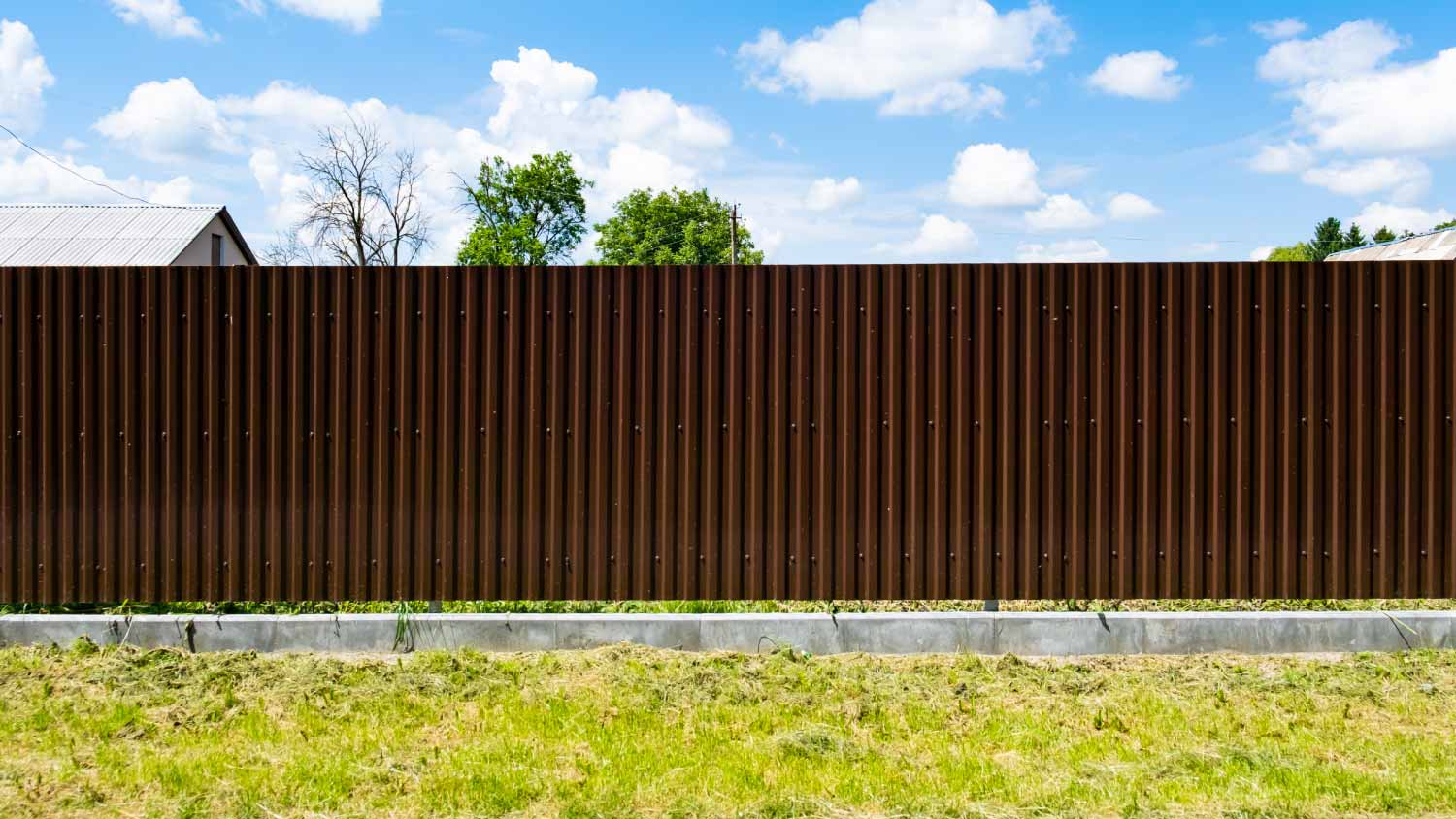
A corrugated metal fence marries form and function. The solid metal panels create an excellent privacy barrier, keeping passersby from seeing what's going on in your yard. The panels also help to block sound and wind.
Often, corrugated metal fences are surrounded by wooden frames, giving them an industrial-chic appearance. The fences are incredibly durable and affordable when compared to other metal fence options.
| Pros | Cons |
|---|---|
| Excellent privacy | Not everyone's taste |
| Affordable | Can rust |
| Long-lasting | Tricky to DIY |
Best for: Homeowners who want a lot of privacy and who like an industrial look

If you're hoping to make a big statement with a long-lasting design, consider installing a stone or brick fence along your property. The work of a mason is costly, between $70 and $110 an hour for labor alone, as are the materials, which can cost up to $80 per square foot.
On the other hand, the variations of masonry fences are endless. Choose from natural stone, stone veneer, brick, concrete, and even stucco. While some masonry fences also act as retaining walls, others simply play the role of a privacy fence or a fence to mark your property line. Masonry also pairs well with other materials, such as wrought-iron details, aluminum gates, or even wooden accents.
| Pros | Cons |
|---|---|
| Customizable | Expensive |
| Highly durable | Tricky installation |
| Increased curb appeal | Higher-maintenance |
Best for: Homeowners seeking a custom, classic fence style
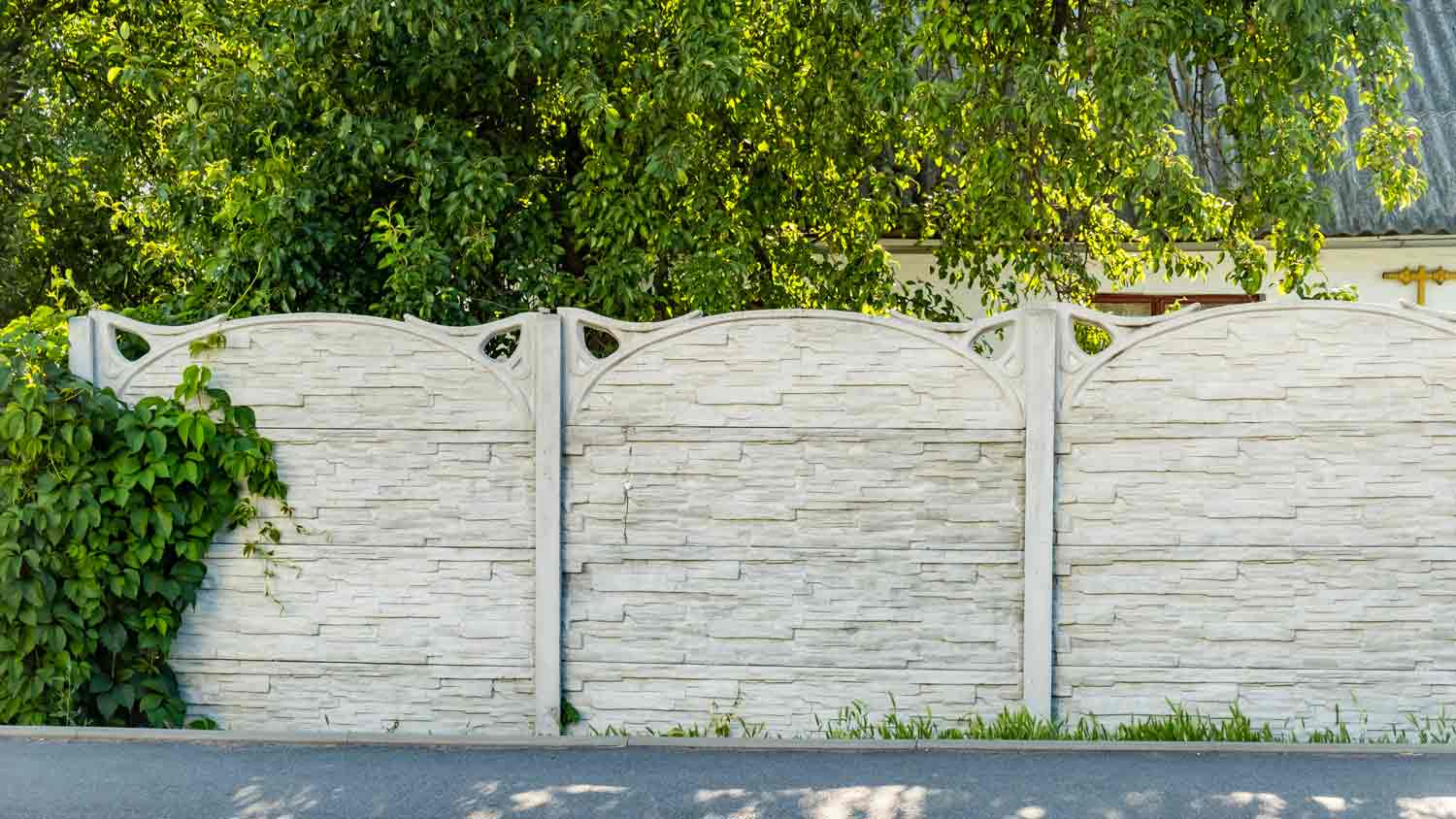
If you still think of concrete fences as cumbersome, ugly, industrial chunks of blocks, think again. Though still limited in styles compared to other fencing options, concrete fencing comes in various shapes and forms in today’s market.
As one of the most durable fence types, concrete fencing provides top-notch security, privacy, and decent sound reduction. It can also withstand the harshest weather and human tampering.
Concrete fencing installation with precast panels costs $1,500 to over $8,000. However, since well-built concrete fencing requires little to no maintenance, the savings in the long run often justify the higher up-front investment.
| Pros | Cons |
|---|---|
| Extremely durable | Higher up-front cost |
| Low maintenance need | Limited styles and designs |
| Good soundproof effect | Once built, it’s permanent |
Best for: Homeowners seeking top-notch privacy and security and are willing to invest
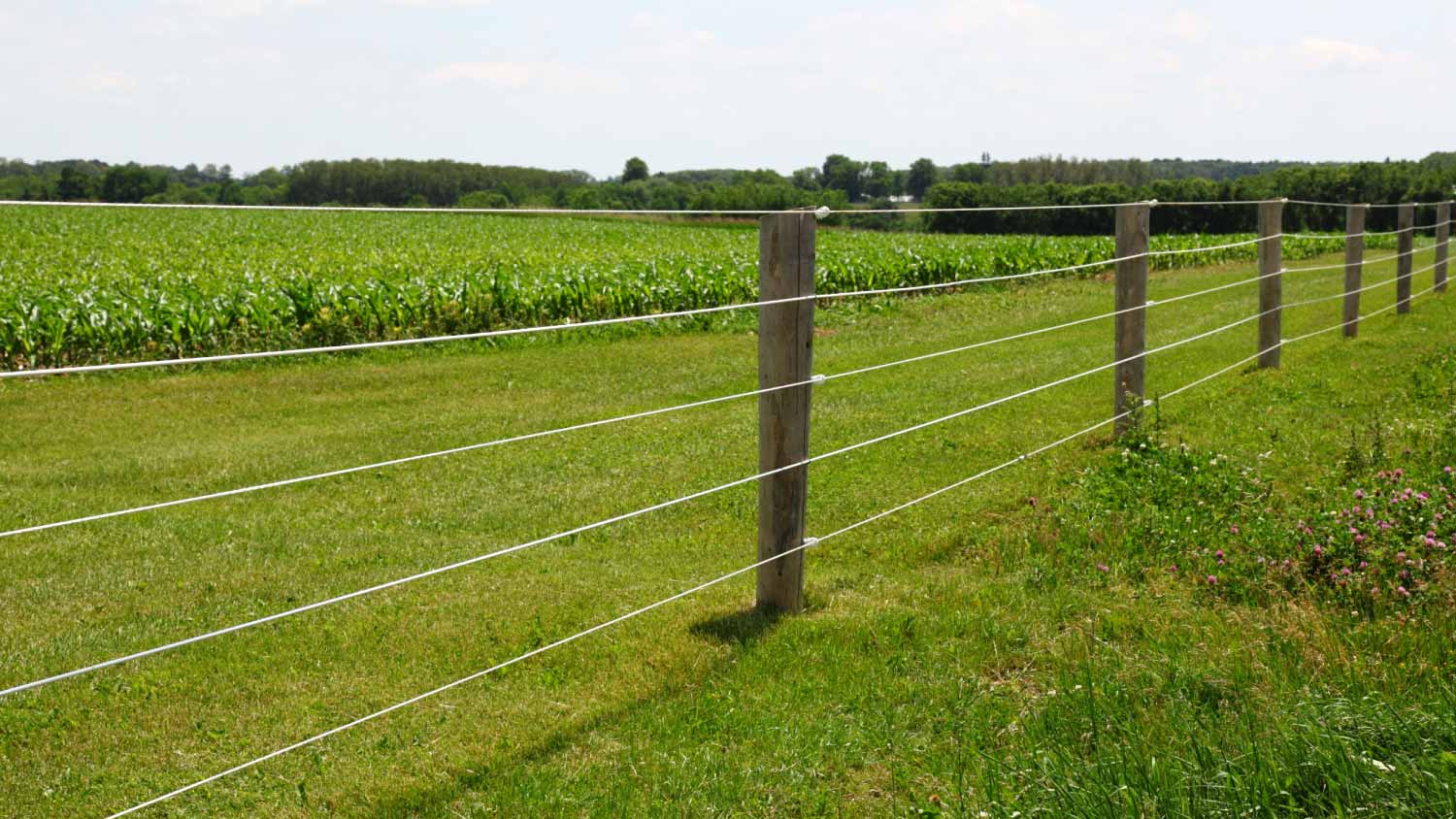
Electric fences feature electrified wires that shock anyone—person or animal—who comes into contact with them. They're commonly used on farms or in rural areas to keep livestock safe or prevent critters from getting into a yard.
Since electric fences are pretty barebones, they're usually not the most aesthetically pleasing option. They also may not be the safest pick, particularly for homes with children or in areas with a lot of kids and pets.
| Pros | Cons |
|---|---|
| Low cost | Can cause injury |
| Easy to turn off | Requires electricity |
| Can protect animals | Not attractive |
Best for: Homeowners in rural areas who have animals they want to protect

You can't see an invisible fence, but your dog knows it's there. Traditionally, an invisible fence system consisted of a wire buried in the ground and a collar worn by a pet. If a dog approached or crossed the wire, they would receive a shock.
Newer invisible fence models are wireless and use GPS and geofencing to keep a dog in a yard. The dog still wears a collar, but no longer gets an electrical zap. Instead, their collar starts beeping as they approach the boundary. It then vibrates and may zap the animal if they continue on.
Not every dog responds to an invisible fence collar, and some may have medical conditions that make them unable to tolerate the beeps, vibrations, or zaps. It's also important to understand that an invisible fence may keep your pet in the yard, but it won't provide privacy or keep other animals out.
| Pros | Cons |
|---|---|
| Can contain your pet | Needs electricity |
| Invisible | Can be cruel |
Best for: Pet owners who want to keep their dog in the yard
Invisible electric fencing may not be for everyone, and not all dogs respond to it.
Amelia Weiber, PDT-KA, CCBC, and fear-free certified technician and trainer who runs Caring Behavior Animal Behavior Consulting and sits on the advisory board for Daily Paws, noted that “electric fences can result in behavioral side effects and may not be able to keep a dog safely in the yard so they should be avoided as a containment option.”
Before choosing an invisible electric fence, talk to your veterinarian. Additionally, some states and counties may not allow this type of fencing, so always check local ordinances.

If you aren’t sure which type of fence to choose, consider the following factors:
Purpose: First, think about why you’re building the fence. Whether you need to contain your pets, create extra privacy, or define your property lines, understanding the purpose of the fence can help you decide which type is best.
Cost: Fencing materials come in a range of price points. Electric fences are some of the most affordable options, running between $2 and $4 per linear foot. Steel is on the pricier end, with these fences costing $17 to $90 per linear foot.
Aesthetic: Maybe you love the classic look of a white picket fence, or perhaps you prefer the industrial vibe of corrugated metal. Either way, your personal preferences can help guide your decision, too.
HOA regulations: If you’re part of a homeowners association (HOA), there might be rules about what types of fences you can install. For example, your fence may have to be a certain style or match other fences in your neighborhood.
Still on the fence? (Pun intended.) Reach out to a local fence pro to learn more about these options and find the best one for your home.
From average costs to expert advice, get all the answers you need to get your job done.

Get expert insights on wrought iron railing repair cost, including average prices, key cost factors, and tips to save on your next project.

Pool fence costs depend on the type of fencing and the size of your pool. This guide will help you figure out the true cost of pool fence installation.

Renting temporary fencing will protect your property during construction or even a party. Fence type, material, and security features impact the cost.

This step-by-step guide will teach you how to tighten a sagging chain link fence. Improve your fence's appearance and protect your property.
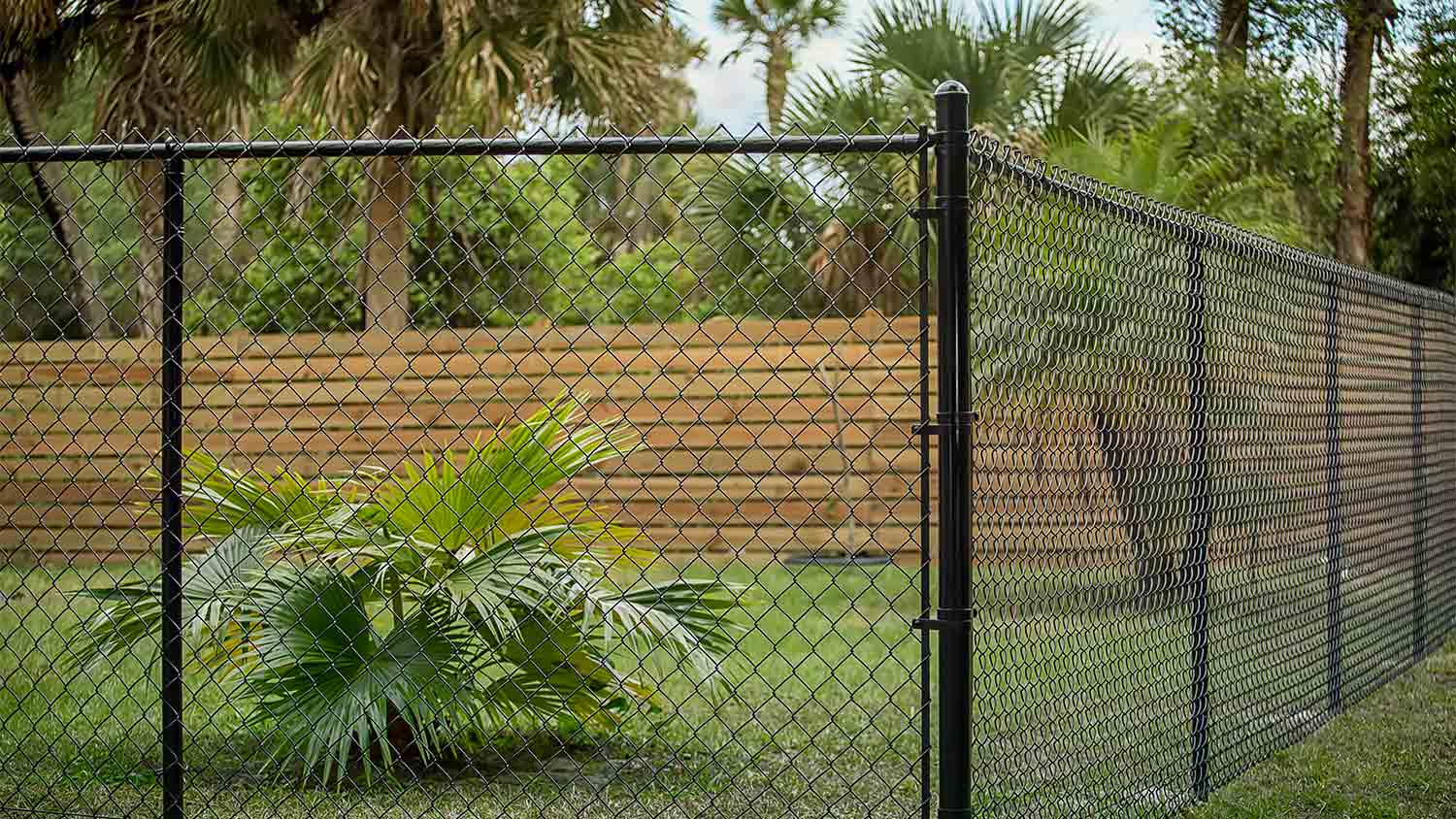
Wondering who to hire to repair a chain link fence? Learn when to call a fence contractor, when a handyperson fits, and how repairs get done.

Still on the fence about what type of fence is right for your yard? We’re breaking down the key differences between vinyl vs. wood fence options.